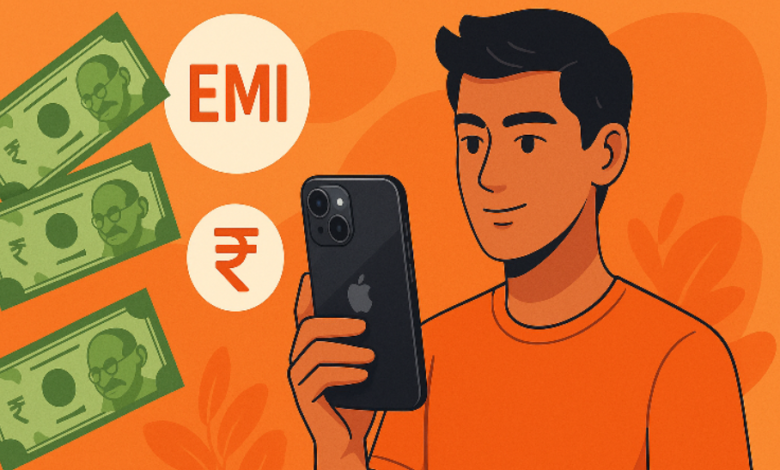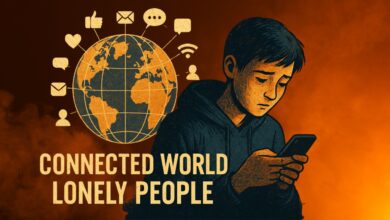Why Indians Are Taking Loans for iPhones: The Rise of EMI Lifestyle

RINAL RATHI: India’s New Obsession
In today’s fast-changing India, the way we spend money has undergone a complete transformation. Gone are the days when people saved for months or years before buying something expensive. Now, with just a few taps on your phone, you can own anything from the latest iPhone to a brand-new fridge by simply paying in monthly instalments.
EMIs (Equated Monthly Installments) have moved beyond just home and car loans. You can now buy headphones, mobile plans, even a Swiggy membership all on EMI. This trend isn’t just about convenience; it’s changing how Indians think about money, success, and status. But the big question is is this shift good or bad?
What is Driving the EMI Lifestyle in India?
1. Easy Access to Credit
Getting credit used to be tough. Banks needed tons of documents, long wait times, and often rejected small-ticket loans. But today, fintech apps like ZestMoney, LazyPay, Simpl, and CRED have changed the game completely.
You no longer need a credit card or a big credit history. These apps offer quick, paperless approvals sometimes within minutes. And the best part? Many of them offer 0% interest EMIs, which makes it super tempting. Want to buy a ₹70,000 iPhone? These platforms break it down to ₹3,000 per month with no interest. That kind of offer is hard to resist for anyone with a stable salary or even a part-time job.
Even for food delivery subscriptions or OTT platforms, easy loans are available normalising the idea that anything can be bought on EMI.
2. The Pressure to Look Successful
This is the emotional side of the EMI story. Social media, especially platforms like Instagram and Snapchat, has made people feel like they need to constantly “look good” online. Whether it’s wearing branded clothes, having the latest gadgets, or showing off a new vehicle looking successful is often more important than actually being financially secure.
Many young Indians, especially those in their 20s and early 30s, now feel the need to keep up appearances. Even if they can’t afford a ₹1.3 lakh iPhone, the EMI system lets them “appear rich” without spending the whole amount upfront.
It’s not just about the phone it’s about status, influence, and how people perceive you.
3. Low Down Payments
This is another reason why the EMI culture has exploded in India. Earlier, expensive products required large down payments, which acted as a natural barrier. But now, brands and lenders offer “No Down Payment” schemes.
You can own an iPhone or laptop by just paying the first monthly instalment. For example, some iPhones worth over ₹1 lakh can be taken home for just ₹3,000 per month, with no upfront cost. This makes high-end products accessible to the masses, even if it stretches their budget in the long run.
It feels light at first but many people end up juggling multiple EMIs at once.
4. EMI on Everything
Earlier, EMI was used for cars, bikes, or furniture. But now, everything from groceries to gold jewellery is available on EMI. Even apps like Swiggy One, Zomato Gold, Tata Neu Pass now offer “Buy Now Pay Later” features.
What this means is that EMI is no longer just a finance option it has become a lifestyle habit. Whether it’s a new phone, a washing machine, or a fashion purchase people don’t think twice before choosing the EMI option.
In some cases, people don’t even check the full price; they only check if the monthly EMI fits their budget.
📊 Infographic: Popular Products Bought on EMI in India
Rank
Product
Average EMI (Monthly)
1️⃣
iPhone (14/15 Series)
₹2,999 – ₹4,999
2️⃣
Smart TVs
₹1,000 – ₹2,000
3️⃣
Laptops
₹1,500 – ₹3,000
4️⃣
Refrigerators
₹800 – ₹1,500
5️⃣
Two-wheelers
₹2,500 – ₹5,000
The iPhone EMI Trend
Apple used to be considered a “luxury brand” in India, something only the rich could afford. But that’s changed in the last 3 years. With aggressive EMI offers, cashback schemes, student discounts, and no-cost EMI options, Apple has cleverly made its iPhones look affordable.
Now, most iPhones in India are not bought outright. They are purchased on monthly instalments often over 12 or 24 months. This has allowed even middle-income groups to experience the Apple ecosystem without worrying about the upfront cost.
For many young Indians, having an iPhone is more about social proof than functionality. Even if they have to stretch their budget, they’ll do it for the status.
The Dark Side of the EMI Lifestyle
1. Hidden Costs
The term “0% interest EMI” sounds attractive but many people don’t read the fine print. These schemes often come with processing fees, GST, documentation charges, and penalties for late payments.
So while it may look like you’re getting a good deal, the total amount paid might be much higher than expected.
2. Debt Trap
Buying everything on EMI creates a situation where you are always in debt. Your monthly income is split across 4-6 payments, leaving little room for savings or emergencies.
And if you miss even a single payment, your credit score takes a hit. This can affect your chances of getting bigger loans (like home loans or business loans) in the future.
3. No Room for Savings
Let’s say you earn ₹40,000 a month and you are paying ₹10,000 in EMIs for an iPhone, laptop, and a fridge. After rent, food, and bills there’s hardly anything left to save.
That means you’re one emergency away from financial trouble. This constant spending habit delays wealth creation, investments, and financial security.
4. Lifestyle Inflation
As EMI becomes easier, people tend to upgrade their lifestyle without upgrading their income.
They start believing they “deserve” everything: the best phone, designer shoes, premium subscriptions. This is called lifestyle inflation, and it can be dangerous in the long run.
Changing India’s Financial Habits
India was once a country of savers. Our parents saved first and spent it later. They used cash or avoided debt unless it was absolutely necessary.
But today, credit has replaced cash. People want the lifestyle today, not 2 years later. Convenience is winning over caution. And sadly, this shift has weakened our financial discipline.
Young people are growing up thinking that EMIs are normal when in reality, it’s a trap if not handled wisely.
So, Is the EMI Lifestyle Good or Bad?
It’s not black and white. EMI is not the enemy, irresponsible use is.
✅ GOOD:
For essentials like education, emergency healthcare, or starting a business.
When you have a stable income and financial plan.
❌ BAD:
For buying luxury items just to impress others.
If you already have multiple EMIs running.
Conclusion: Think Before You Swipe
EMIs have made it incredibly easy to buy anything today, whether or not we truly need it. But while it may feel convenient now, every monthly payment is a commitment to a slice of your future income already spent.
Before choosing the EMI option, pause for a moment and ask yourself:
Do I actually need this item, or am I just trying to keep up with others?
If it’s something essential, or if you have the financial bandwidth to manage it comfortably go ahead. But if it’s just about impressing people or fitting into a trend, it may not be worth the long-term stress.
Owning an iPhone can feel great but owning your financial freedom, savings, and peace of mind feels even better in the long run.
In the end, it’s not about avoiding EMIs altogether. It’s about knowing when to use them, and more importantly, when not to.




